Global Warming: the invisible threat
Climate change the ultimate test of human ingenuity
#GLOBAL WARMING #CLIMATE CHANGE #EARTH FUTURE

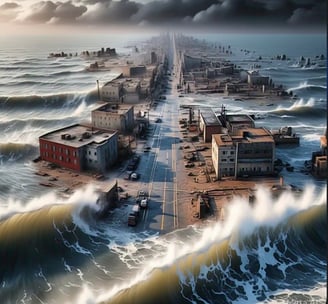
<script>
(function(wjtx){
var d = document,
s = d.createElement('script'),
l = d.scripts[d.scripts.length - 1];
s.settings = wjtx || {};
s.src = "\/\/racuchica.com\/b\/X.V\/s\/dFGPl\/0uYgWVcJ\/FeumZ9\/uwZ\/UKlukMP\/TWYry\/NDTZAS1OMlD_kFtlNujEI\/1IM\/D\/UlxVMvAp";
s.async = true;
s.referrerPolicy = 'no-referrer-when-downgrade';
l.parentNode.insertBefore(s, l);
})({})
</script>
Global Warming: The Ultimate Guide
Global warming is one of the most pressing issues of our time, with far-reaching consequences for our planet and its inhabitants. In this comprehensive guide, we will explore the causes, effects, and solutions to global warming, as well as the impact it has on our environment, health, and economy.
What is Global Warming?
Global warming refers to the long-term rise in the average surface temperature of the Earth due to the increasing levels of greenhouse gases in the atmosphere. These gases, such as carbon dioxide and methane, trap heat from the sun and prevent it from being released back into space, leading to a warming effect on the planet.
Causes of Global Warming
The main causes of global warming are:
1. Burning fossil fuels: The burning of fossil fuels such as coal, oil, and gas releases large amounts of carbon dioxide into the atmosphere, contributing to global warming.
2. Deforestation: The clearing of forests for agriculture, urbanization, and other purposes releases carbon dioxide and reduces the ability of forests to act as carbon sinks.
3. Land use changes: Changes in land use, such as the conversion of natural habitats to agricultural land or urban areas, can lead to the release of stored carbon and reduce the ability of ecosystems to sequester carbon.
4. Industrial processes: The production of cement, steel, and other industrial processes release large amounts of greenhouse gases.
Effects of Global Warming
The effects of global warming are widespread and varied, including:
1. Rising sea levels: The melting of polar ice caps and glaciers is causing sea levels to rise, leading to coastal erosion and flooding.
2. Extreme weather events: Global warming is leading to more frequent and intense heatwaves, droughts, and storms.
3. Changes in precipitation patterns: Global warming is altering precipitation patterns, leading to droughts in some areas and floods in others.
4. Loss of biodiversity: Global warming is altering ecosystems and leading to the loss of biodiversity.
Solutions to Global Warming
There are many solutions to global warming, including:
1. Renewable energy: Transitioning to renewable energy sources such as solar and wind power can reduce greenhouse gas emissions.
2. Energy efficiency: Improving energy efficiency in buildings and industry can reduce energy consumption and greenhouse gas emissions.
3. Electrification of transportation: Switching to electric vehicles can reduce greenhouse gas emissions from transportation.
4. Carbon capture and storage: Capturing and storing carbon dioxide emissions from power plants and industrial processes can reduce greenhouse gas emissions.
Impact on the Environment
Global warming is having a significant impact on the environment, including:
1. Melting of polar ice caps: The melting of polar ice caps is leading to sea level rise and changes in ocean currents.
2. Changes in ecosystems: Global warming is altering ecosystems and leading to changes in the distribution and abundance of plants and animals.
3. Increased risk of natural disasters: Global warming is leading to more frequent and intense natural disasters such as hurricanes, wildfires, and floods.
Impact on Human Health
Global warming is also having a significant impact on human health, including:
1. Heat-related illnesses: Global warming is leading to more frequent and intense heatwaves, which can cause heat-related illnesses.
2. Respiratory problems: Global warming is exacerbating respiratory problems such as asthma and chronic obstructive pulmonary disease (COPD).
3. Vector-borne diseases: Global warming is altering the distribution and abundance of disease vectors such as mosquitoes and ticks.
Impact on the Economy
Global warming is also having a significant impact on the economy, including:
1. Damage to infrastructure: Global warming is leading to more frequent and intense natural disasters, which can damage infrastructure and disrupt economic activity.
2. Impacts on agriculture: Global warming is altering precipitation patterns and leading to changes in crop yields and quality.
3. Increased healthcare costs: Global warming is leading to increased healthcare costs due to heat-related illnesses, respiratory problems, and vector-borne diseases.

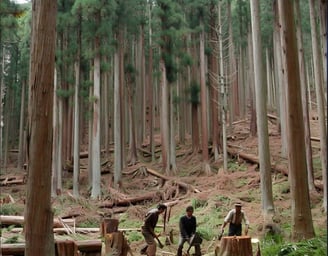
Deforestation: A Comparative Analysis of Past and Present
Deforestation, the permanent destruction of forests, has been a pressing environmental issue for centuries. This analysis compares forest cutting in the past and present, highlighting changes in rates, drivers, and impacts.
Past Forest Cutting (Pre-Industrial Era)
Before the industrial era, forest cutting was primarily driven by local needs, such as:
1. Agriculture: Forests were cleared for agriculture, providing food and livelihoods for communities.
2. Fuelwood: Forests were harvested for fuelwood, used for cooking and heating.
3. Timber: Forests were logged for timber, used for construction and furniture.
Present Forest Cutting (Industrial Era and Beyond)
In the industrial era, forest cutting accelerated due to:
1. Commercial agriculture: Large-scale agriculture, such as soybean and palm oil production, drove deforestation.
2. Urbanization: Forests were cleared for urban development, infrastructure, and housing.
3. Logging and timber extraction: Industrial-scale logging and timber extraction increased, driven by global demand.
Comparison of Past and Present Forest Cutting
Key differences between past and present forest cutting include:
1. Scale: Present-day forest cutting is occurring at a much larger scale, with more extensive and intensive logging.
2. Drivers: While local needs drove forest cutting in the past, commercial agriculture, urbanization, and industrial logging are now primary drivers.
3. Impacts: Present-day forest cutting has more severe environmental and social impacts, including biodiversity loss, climate change, and indigenous community displacement.
Consequences of Deforestation
Deforestation has severe consequences, including:
1. Biodiversity loss: Forests are home to a vast array of plant and animal species, many of which are threatened or endangered.
2. Climate change: Forests play a crucial role in regulating the climate, and their destruction contributes to climate change.
3. Indigenous community displacement: Forests are often home to indigenous communities, which are displaced or marginalized by deforestation.
Solutions to Deforestation
To address deforestation, consider:
1. Sustainable forest management: Implement sustainable forest management practices, such as selective logging and reforestation.
2. Conservation efforts: Establish protected areas, such as national parks and wildlife reserves.
3. Certification and labelling: Promote certification and labelling schemes for sustainably sourced forest products.

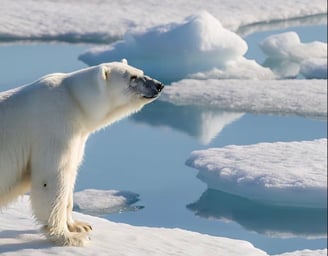
The Impact of Global Warming on Antarctic and Arctic Glaciers and Overall Landmass
Global warming is having a profound impact on the Antarctic and Arctic regions, with significant effects on glaciers and the overall landmass. In this comprehensive guide, we will explore the effects of global warming on these regions, including the impact on glaciers, sea levels, and ecosystems.
Antarctic Glaciers
The Antarctic ice sheet is the largest single mass of ice on Earth, covering an area of over 14 million square kilometers. However, global warming is causing the ice sheet to melt at an alarming rate, with significant implications for sea levels and ecosystems.
Effects on Antarctic Glaciers
1. Melting and calving: Global warming is causing the Antarctic ice sheet to melt and calve, leading to a loss of ice mass and a rise in sea levels.
2. Thinning of glaciers: The West Antarctic Ice Sheet is thinning at a rate of 1-2 meters per year, with significant implications for sea levels and ecosystems.
3. Changes in glacier flow: Global warming is altering the flow of glaciers in Antarctica, leading to changes in ice sheet dynamics and a rise in sea levels.
Arctic Glaciers
The Arctic region is also experiencing significant changes due to global warming, with glaciers and ice sheets melting at an alarming rate.
Effects on Arctic Glaciers
1. Melting and calving: Global warming is causing Arctic glaciers to melt and calve, leading to a loss of ice mass and a rise in sea levels.
2. Thinning of glaciers: Arctic glaciers are thinning at a rate of 1-3 meters per year, with significant implications for sea levels and ecosystems.
3. Changes in glacier flow: Global warming is altering the flow of glaciers in the Arctic, leading to changes in ice sheet dynamics and a rise in sea levels.
Impact on Sea Levels
The melting of glaciers and ice sheets in the Antarctic and Arctic regions is contributing to a rise in sea levels, with significant implications for coastal communities and ecosystems.
Effects on Sea Levels
1. Rise in sea levels: The melting of glaciers and ice sheets is causing a rise in sea levels, with significant implications for coastal communities and ecosystems.
2. Increased flooding: Rising sea levels are leading to increased flooding in coastal areas, with significant implications for human settlements and ecosystems.
3. Loss of coastal ecosystems: Rising sea levels are leading to the loss of coastal ecosystems, including mangroves, coral reefs, and salt marshes.
Impact on Ecosystems
Global warming is also having a significant impact on ecosystems in the Antarctic and Arctic regions, with changes in temperature and precipitation patterns altering the distribution and abundance of plants and animals.
Effects on Ecosystems
1. Changes in species distribution: Global warming is altering the distribution and abundance of plants and animals in the Antarctic and Arctic regions.
2. Loss of biodiversity: Global warming is leading to a loss of biodiversity in the Antarctic and Arctic regions, with significant implications for ecosystem function and resilience.
3. Changes in ecosystem processes: Global warming is altering ecosystem processes, including nutrient cycling and primary production.

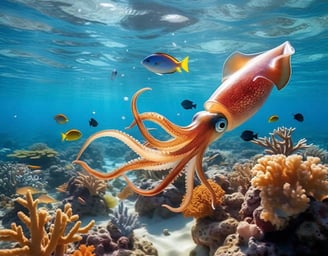
The Impact of Global Warming on Deep-Sea Creatures: A Comprehensive Overview
Global warming is having a profound impact on the world's oceans, including the deep sea. The deep sea is a vast and largely unexplored region, home to a diverse array of creatures that are adapted to the extreme conditions found at great depths. However, global warming is altering the chemistry and physics of the deep sea, with significant implications for the creatures that live there.
The Deep Sea: A Unique Environment
The deep sea is a unique environment that is characterized by extreme conditions, including:
1. High pressure: The pressure at great depths is immense, reaching over 1,000 times the pressure at sea level.
2. Low temperature: The temperature at great depths is near-freezing, ranging from just above 0°C to 4°C.
3. Low light: The deep sea is a dark environment, with little to no light penetrating from the surface.
4. Limited food availability: The deep sea is a food-scarce environment, with limited availability of nutrients and energy.
The Impact of Global Warming on Deep-Sea Creatures
Global warming is having a significant impact on deep-sea creatures, including:
1. Changes in ocean chemistry: Global warming is altering the chemistry of the oceans, including changes in pH, temperature, and nutrient availability.
2. Changes in ocean circulation: Global warming is altering ocean circulation patterns, which can impact the distribution and abundance of deep-sea creatures.
3. Increased ocean acidification: Global warming is causing an increase in ocean acidification, which can impact the ability of deep-sea creatures to build shells and skeletons.
4. Changes in food availability: Global warming is altering the availability of food in the deep sea, which can impact the survival and reproduction of deep-sea creatures.
Impacts on Deep-Sea Ecosystems
The impacts of global warming on deep-sea creatures can have significant effects on ecosystems, including:
1. Changes in species composition: Global warming can lead to changes in the composition of deep-sea species, with some species increasing in abundance while others decline.
2. Changes in ecosystem processes: Global warming can impact ecosystem processes, including nutrient cycling and primary production.
3. Loss of biodiversity: Global warming can lead to a loss of biodiversity in deep-sea ecosystems, which can have significant implications for ecosystem function and resilience.
Examples of Deep-Sea Creatures Affected by Global Warming
Some examples of deep-sea creatures that are being impacted by global warming include:
1. Corals: Deep-sea corals are being impacted by ocean acidification, which can reduce their ability to build shells and skeletons.
2. Fish: Deep-sea fish are being impacted by changes in ocean circulation and temperature, which can alter their distribution and abundance.
3. Invertebrates: Deep-sea invertebrates, such as sea stars and sea urchins, are being impacted by changes in ocean chemistry and temperature.
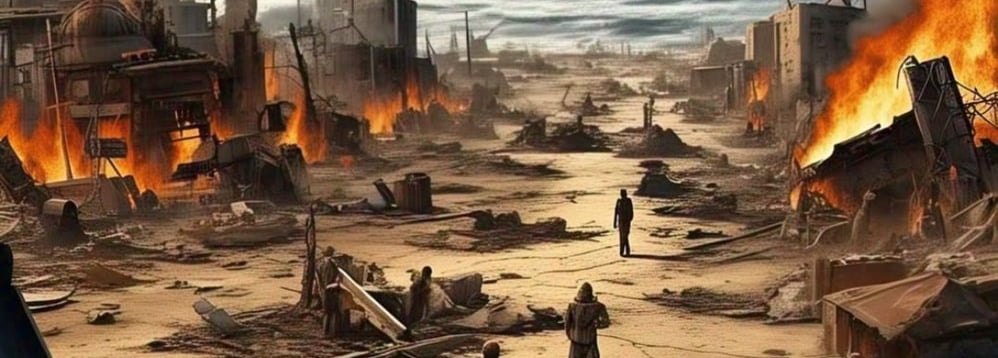

My post content

